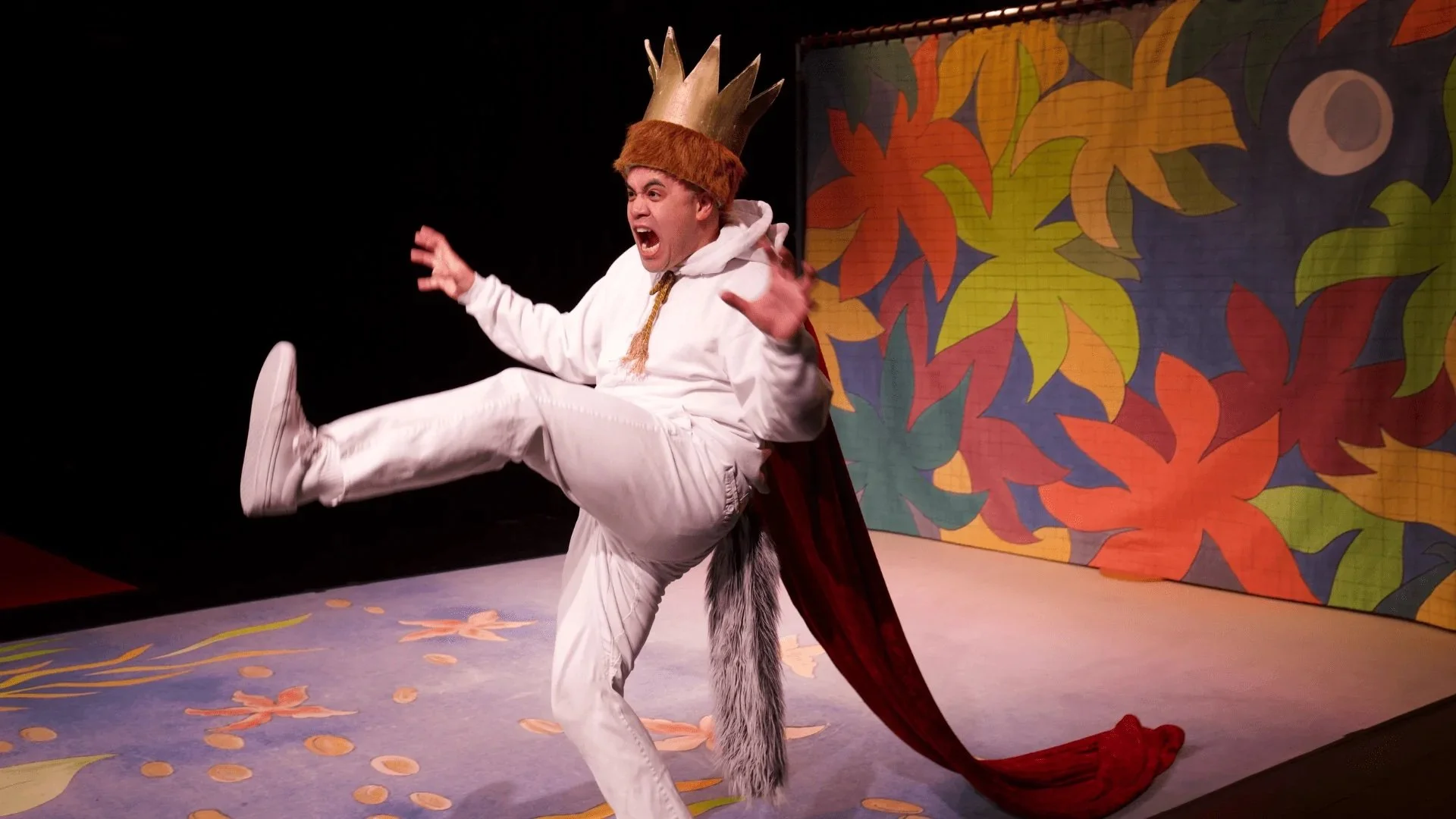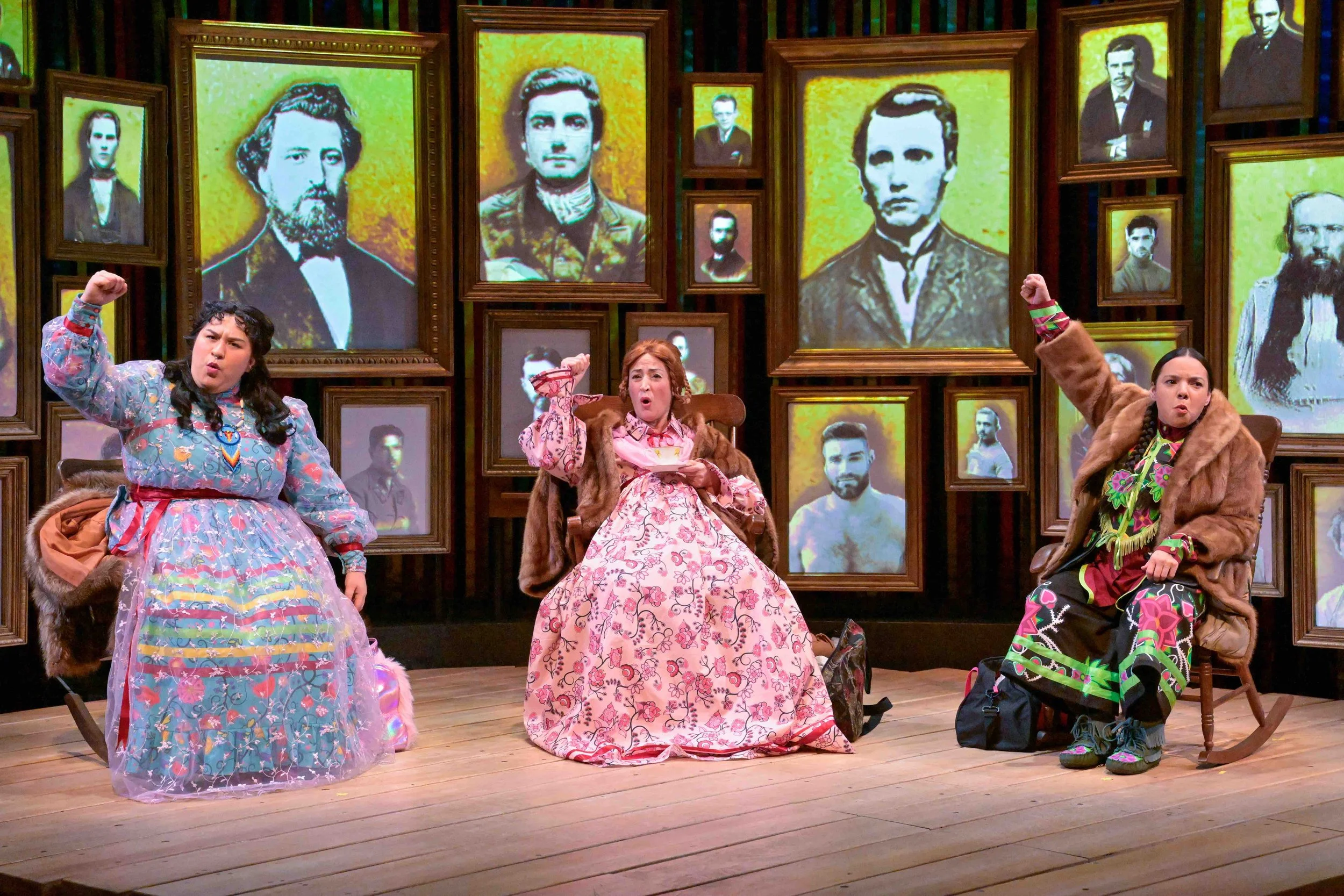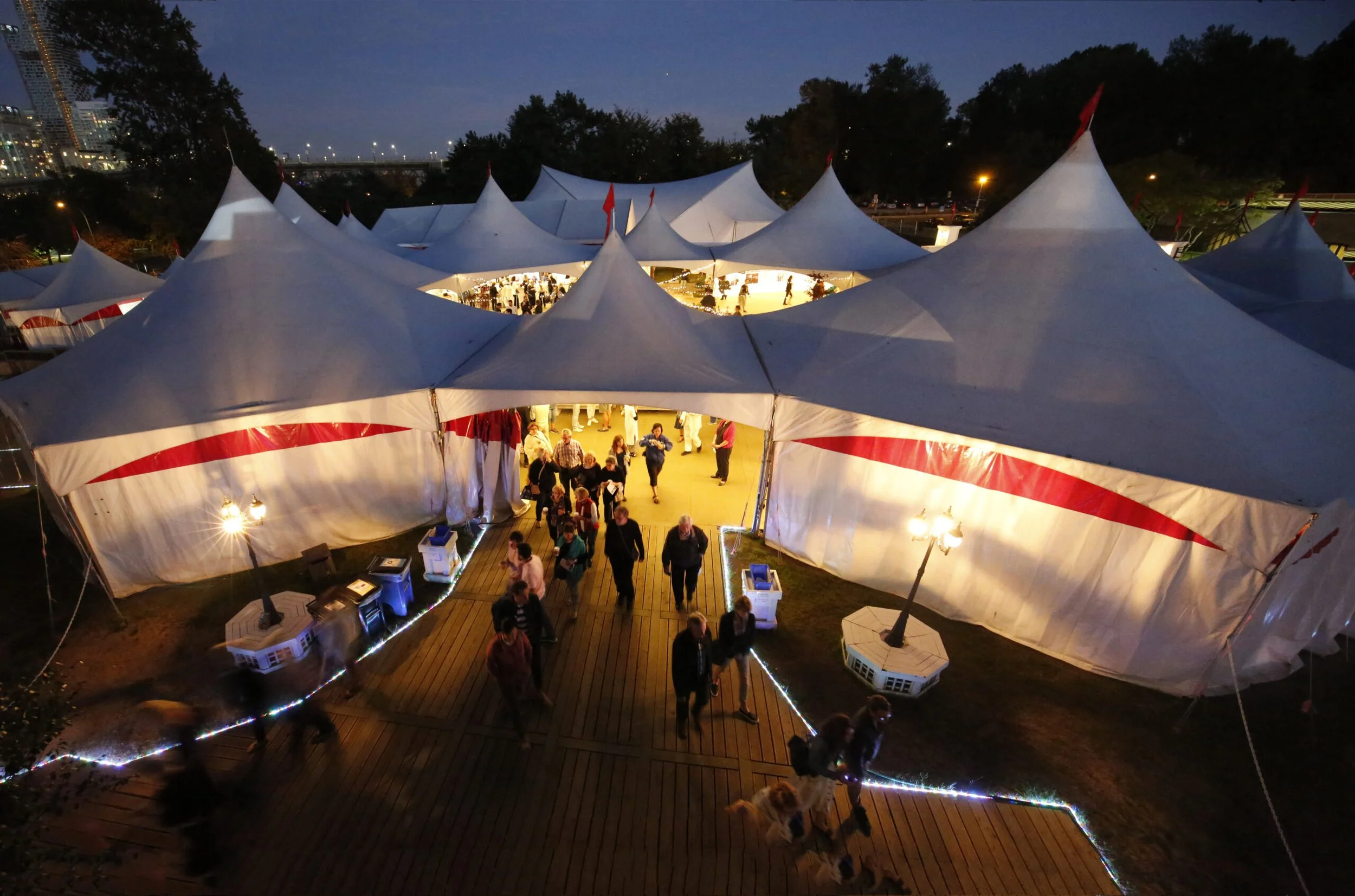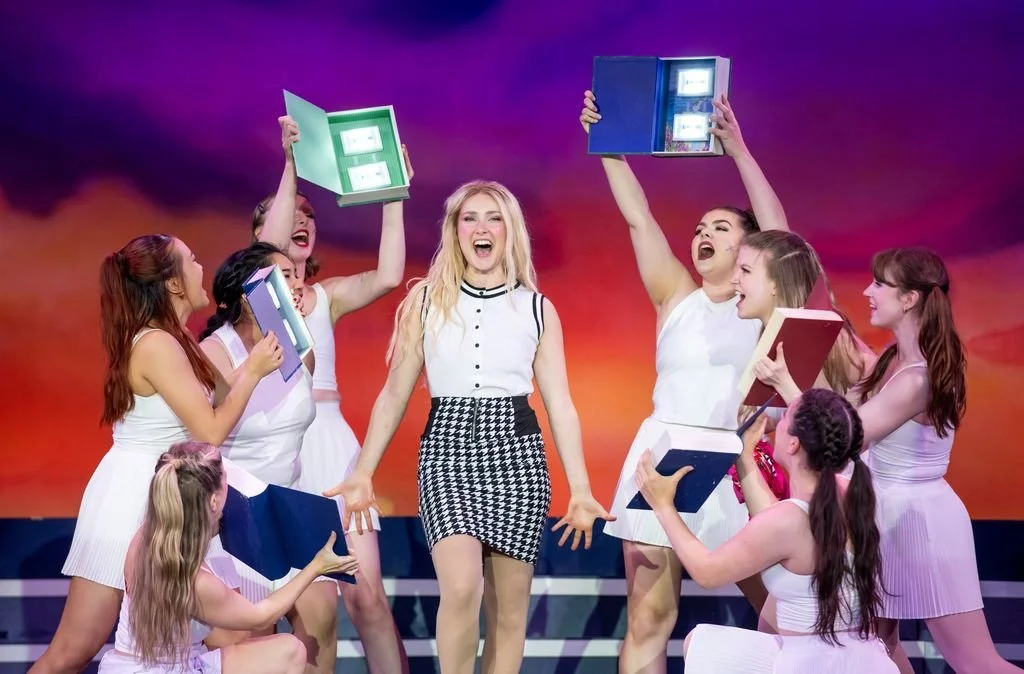Theatre review: Ingenious staging and clever design elevate Bard on the Beach's new adaptation of Henry V
Simple props and nuanced performances come together in Lois Anderson’s visually and aurally striking rendition
Kate Besworth, Marlee Griffiths, and Emilie Leclerc in Henry V. Photo by Tim Matheson
Bard on the Beach presents Henry V at the Howard Family Stage to August 13
DURING SHAKESPEARE’S time, theatre companies frequently toured and performed in various locations. At Bard on the Beach's smaller Howard Family tent, Lois Anderson's production of Henry V embraces this tradition by incorporating a travelling troupe to frame the story. Clever staging and memorable design evoke a timeless, otherworldly atmosphere in a production that emphasizes the exploration of human flaws like greed and cruelty found in the original text.
The small size of the Howard Family Stage tent creates an intimate setting. Seats surround the stage in a tight round, placing viewers within the fantastical realm of the play from the get-go. Amid a thunderous storm, an unnamed troupe, led by Chorus (a captivating Emilie Leclerc) as narrator, arrives with suitcases and draped in tattered garments, safeguarding themselves from the hostile surroundings. They chant a song, beginning with "We few, we few...," a fragment that will resound throughout the play.
As Chorus reveals, corruption and a thirst for war prevail in 15th-century England. Cloak-clad advisors and clergymen urge the newly appointed monarch, 26-year-old Henry, to reclaim his family's French lands. A disdainful gift from the French court ignites the young king’s decision to invade France.
Through swift onstage costume changes, the troupe transitions fluidly between roles. Emphasis is placed on the gruelling physical and emotional journey of King Henry and his army. Anderson’s adaptation delves into the transformative essence of the royal's coming-of-age through an expressive and apocalyptic staging of the Hundred Years War tale.
Within the confines of the Howard Family Stage’s tent, an amalgamation of dystopia and old-world charm come to life. For the meticulously crafted set, designer Amir Ofek uses repurposed burlap coffee bags to fashion a canopy that envelopes the environment. A cracked-desert floor mirrors the ravages of battle and climate change. Piles of weathered chairs scattered throughout the space evoke a haunting sense of history and loss.
There’s remarkable finesse in terms of theatrical staging. Simple elements skillfully capture the brutality of war with impressionistic strokes. The inclusion of chairs, both as scenic design and props, carries profound symbolism, lending weight to the man-made destruction. These unassuming objects act as a pivotal force, seamlessly transitioning scenes, morphing into the French and English courts, or conjuring a warship bristling with cannons. When wielded by soldiers, the broken chair legs transform into battlefield weapons. Supported by Joelysa Pankanea's atmospheric and chilling soundscape, these design elements culminate in a powerful climax during the Battle of Agincourt. In a tragic crescendo, Henry's soldiers, some introduced through flashback scenes depicting the young prince's rebellious days, fall in combat. A throbbing, heartbeat-like rhythm builds ominously as the troops meet their fate.
Via flashbacks set in the town's tavern, we witness Henry's joyful exploits with a mischievous crew of common folk. These scenes underscore the prince's coming-of-age—a journey that takes on darker tones when he assumes the throne and becomes intoxicated with power. Kate Besworth's portrayal of Henry V emphasizes the inner struggle of the young royal, wrestling with his conscience over his callous treatment of former friends and the justness of his war. In the iconic "We few, we happy few, we band of brothers" speech, camaraderie resonates in the words, yet Besworth's vulnerable delivery captures a poignant desperation, reflecting the leader's anguished aversion to more bloodshed.
The ensemble portraying Henry's former crew are a comedic highlight as the group of bantering drunkards and thieves. Munish Sharma shines as the vice-ridden yet loyal Falstaff, whose heartbreak from Henry's betrayal leads to his demise. Advah Soudack's portrayal of Mountjoy, the resourceful and tireless messenger, also stands out. In Lois Anderson’s adaptation, Katharine, the French princess, assumes greater agency and transcends the role of a mere prize of war. She serves as a counterpoint to Henry's misguided ambition and her brother Dauphin's (an energetic Karthik Kadam) macho inclinations. Marlee Griffiths delivers angelic singing as Katharine, who tends to her bee colonies in the peaceful and agrarian French kingdom.
Under Anderson’s direction, Besworth’s and Griffiths’s wooing scenes between Katharine and Henry take on a charming, wholehearted tone. The suggestion that Henry's pursuit of the princess stems from motivations beyond mere love evaporates with a tender and innocent wedding scene—serving as cathartic release from the youthful unrest that has permeated the play.
Anderson's adaptation makes a valiant effort to highlight love and connection, but those themes are at times overshadowed by the presence of darker elements. The framing of the story with a travelling troupe and the compelling apocalyptic design choices, however, leave ample room for reflection on the ruthless and cyclical nature of war.




![Theatre review: Complete Works of William Shakespeare (abridged) [revised] [again] takes pleasingly panicked tour of the Bard’s canon](https://images.squarespace-cdn.com/content/v1/5f10a7f0e4041a480cbbf0be/1752776963817-BS2BYYQMLMSGU9OG3E37/Nathan-Kay-and-Craig-Erickson.-Photo-By-Tim-Matheson.jpg)








